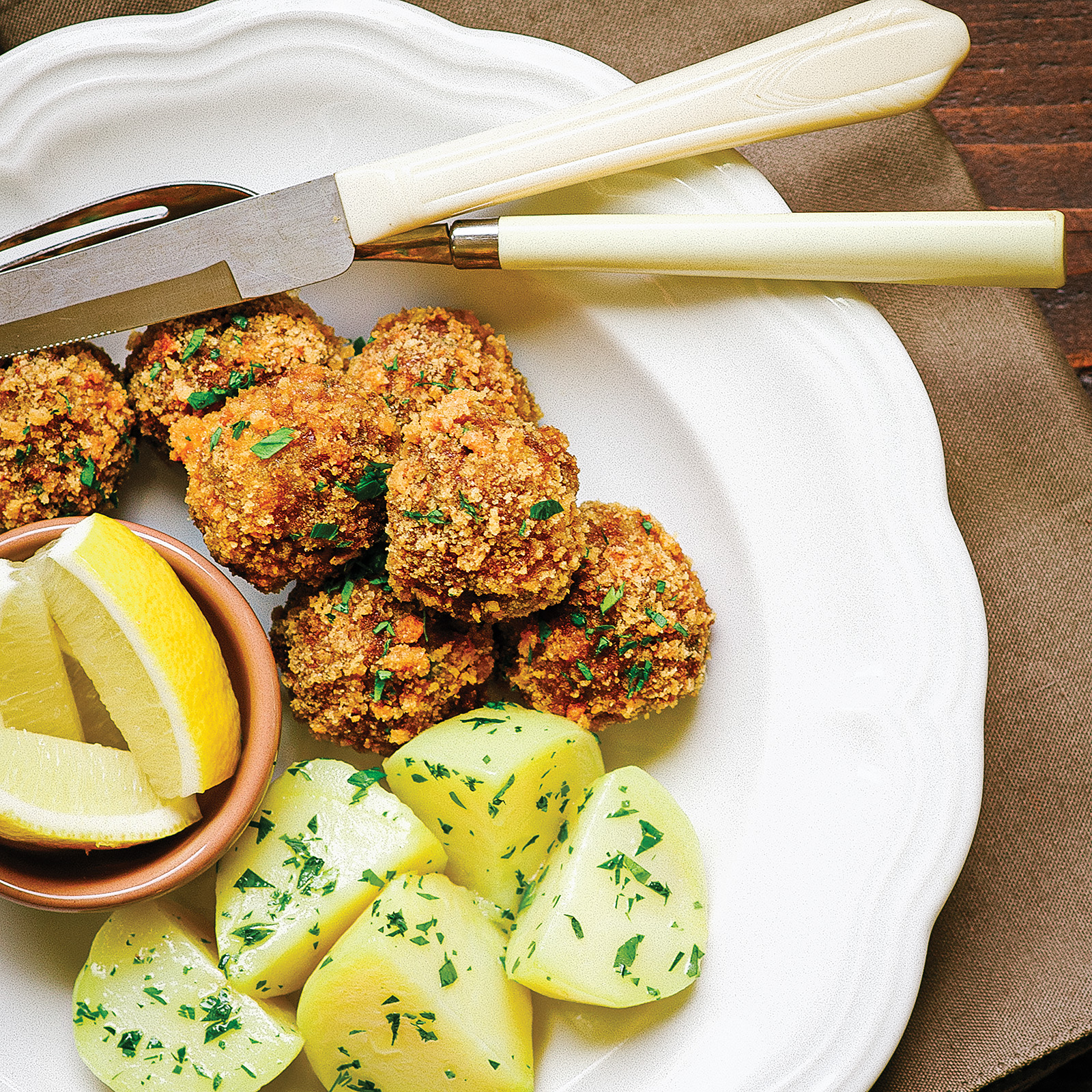
Armchair travel around the world!
Start your reading adventures with our FREE Reading Atlas.

- Around the World in 14 Books
- 7 Thrilling Book Series
- 6 Audiobooks That Are Like Theater For Your Ears



Food and drinks are some of the easiest ways — and the most fun— to vicariously experience another culture. When you add a great book to the mix, you've got the makings of a perfect evening. In Food+Fiction, we recommend a delicious read and a related recipe so you can try the taste of different destinations in your own kitchen.
This post is part of our Food+Fiction series.

Since adventurers and tourists began flocking to the Czech Republic in the late 1990s, Czech food has had a reputation for heavy, meat-centric meals that lacked both vegetables and spices. In the memoir-ish novel Goulash by Brian Kimberling, our hero Elliott and his friends joke that the menu just says ‘meat’ and that it was grown on a ‘meat farm.’
But now, it’s fairly typical to walk any city block and find a Thai restaurant, French café, vegan eatery, burger joint, kebab stand, and Czech pub. Although the international restaurant scene is thriving, the traditional Czech foods — schnitzel, dumplings, sausages, breads, and cakes — are also still very common. Czech cuisine reflects the influences of its neighbors who trampled all over its borders in the past: former members of the Habsburg Empire which was in power from roughly the mid-1800s through the beginning of WWI. The Austro-Hungarian influence explains the hearty prevalence of potatoes, pork, and paprika. (Ahoj, Hungary!)
Pork is the most common meat in the Czech Republic; more than half of the meat consumed is from a hog. Praise the lard! The most popular ways to eat it are sausages (klobásy), roasted pork knuckle, tenderloin (often stuffed with prunes), a luscious spread made from lard and pork cracklings (škvarková pomazánka), and schnitzel.
Ah, schnitzel. Known in Czech as řízek, the schnitzel in Czech restaurants is usually made from pork or chicken breast that’s been pounded thin, dunked in beaten egg and breadcrumbs, then pan-fried on both sides until crisp.
This recipe lightens it up a little by baking instead of deep-frying, removes the gluten by replacing breadcrumbs with pork rinds, and makes it extra fun by shaping the meat into meatballs. It’s not traditional, but it is delicious.

Serves 2–4. Total time: 45 minutes
Potatoes:
Meatballs:
garnish: lemon

Prep. Preheat the oven to 425F and line a large, rimmed baking sheet with baking parchment.
Boil the potatoes. Peel the potatoes and cut them into 2-inch pieces. Place them in a saucepan, add the water and salt, and bring the water to a boil. Reduce the heat to low and simmer, uncovered, until tender, about 15 minutes. Meanwhile…
Prep the meatballs. In a large bowl, combine the ground pork, salt, and black pepper. Mince the parsley and add it to the bowl. Sprinkle the baking soda on top, then drizzle the lemon juice over the baking soda; it will fizz. Mix all the ingredients with your hands until combined.
Roll the meatballs. Beat the egg white in a shallow bowl and place the potato starch in another bowl. Measure a generous tablespoon of meat and roll it into a ball; repeat with the remaining pork, lining up the meatballs on the baking sheet as you go. Next, gently roll each meatball in egg white, then potato starch, and return it to the baking sheet. Roast the meatballs until they’re sizzling and crisp, 20–25 minutes.
Finish the potatoes. When the meatballs are almost finished, drain the potatoes and toss them with ghee. Mince the parsley and sprinkle it over the potatoes. Taste and add salt and pepper as needed. Cut the lemon into wedges.
To serve, place meatballs and potatoes on individual serving plates, then squeeze lemon juice over the meatballs.
‘Pasts matter,’ I said, ‘because they make us who we are.’
‘No, actually,’ said Amanda — ‘we do that.’ — Brian Kimberling
This novel reads like a memoir, a series of vignettes that provide snapshots of the city of Prague at a dynamic time: 1998, about a decade after the fall of Communism. Our would-be hero Elliott is from the midwestern U.S., and he wants more than the ‘megachurches and personal injury lawyers and five square meters of television screen per household’ of his hometown in Indiana. He takes off to Prague with a plan to teach English. Therein lies the entirety of Elliott’s plan. As you might expect, he soon finds himself amid a somewhat motley crew of Czechs. There’s the opinionated experimental artist who steals Elliott’s shoes, a tobacco company bigwig, and Elliott’s students, whom he meets in pubs to teach them American slang while they indoctrinate him with their darkly comic, authentically Czech perspectives on the world. There’s also Amanda, the British girl who’s as sharp and self-possessed as she is beautiful. {more}
This first-person novel (224 pages) was published in February of 2019 by Pantheon. The book takes you to 1990s Prague. Melissa read Goulash and loved it; it wouldn't be on our site if she didn't recommend it.
Bookshop.org is an online bookstore with a mission to financially support independent bookstores and give back to the book community.
Photo by Florian van Duyn.
Want to keep up with our book-related adventures? Sign up for our newsletter!
Can you help us? If you like this article, share it your friends!
Strong Sense of Place is a website and podcast dedicated to literary travel and books we love. Reading good books increases empathy. Empathy is good for all of us and the amazing world we inhabit.
Strong Sense of Place is a listener-supported podcast. If you like the work we do, you can help make it happen by joining our Patreon! That'll unlock bonus content for you, too — including Mel's secret book reviews and Dave's behind-the-scenes notes for the latest Two Truths and a Lie.
Join our Substack to get our FREE newsletter with podcast updates and behind-the-scenes info — and join in fun chats about books and travel with other lovely readers.

We'll share enough detail to help you decide if a book is for you, but we'll never ruin plot twists or give away the ending.
Content on this site is ©2026 by Smudge Publishing, unless otherwise noted. Peace be with you, person who reads the small type.